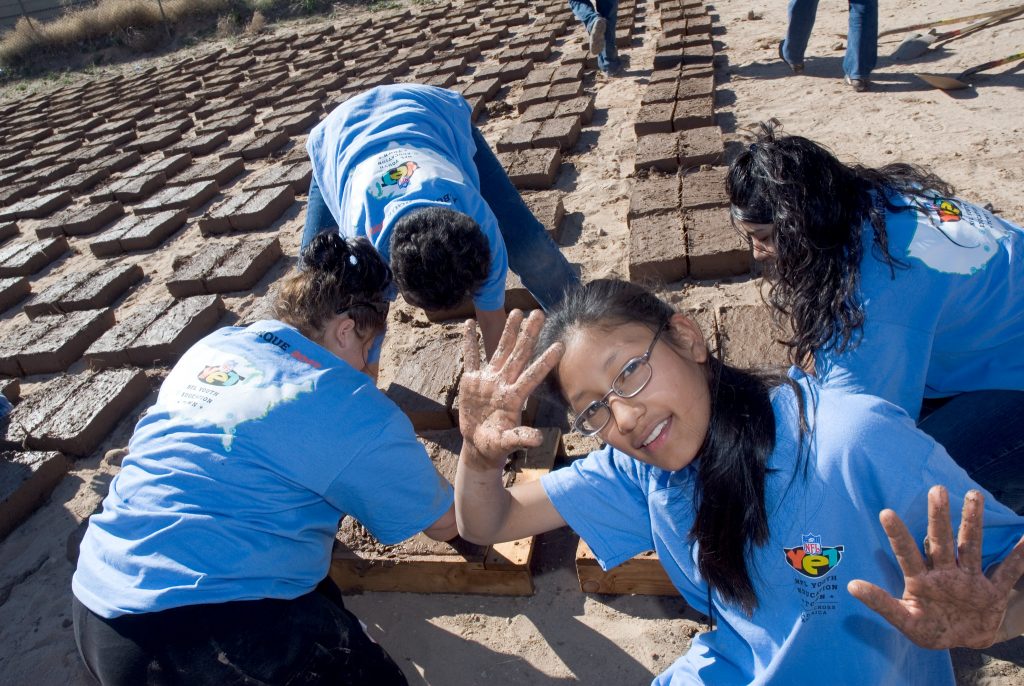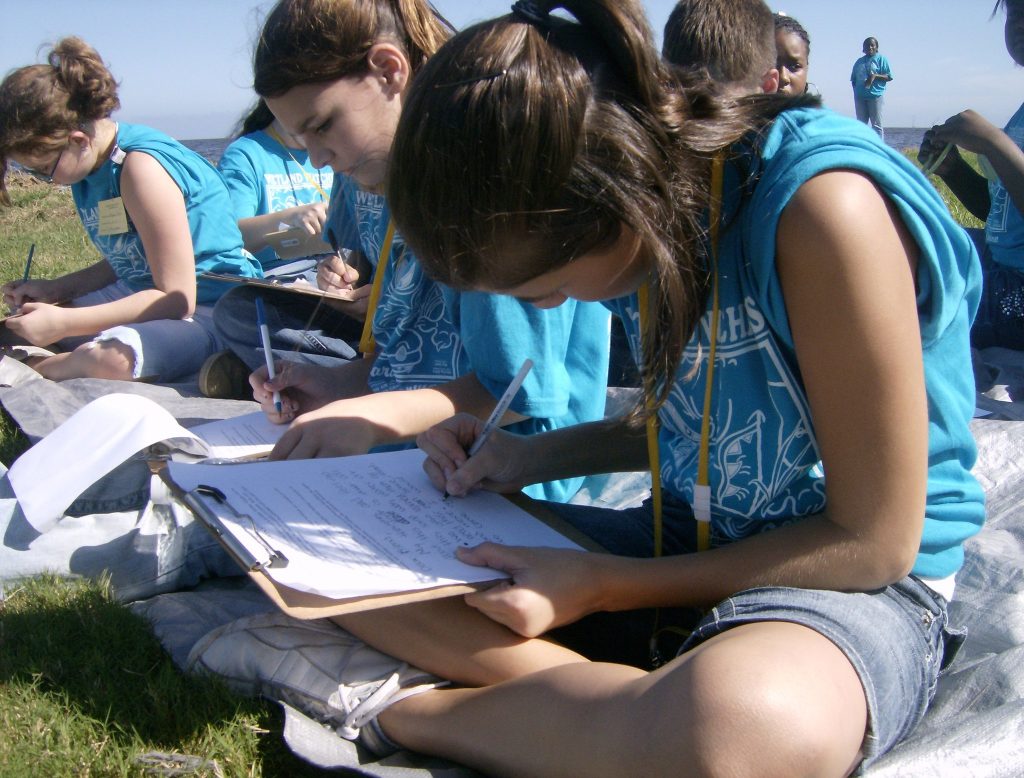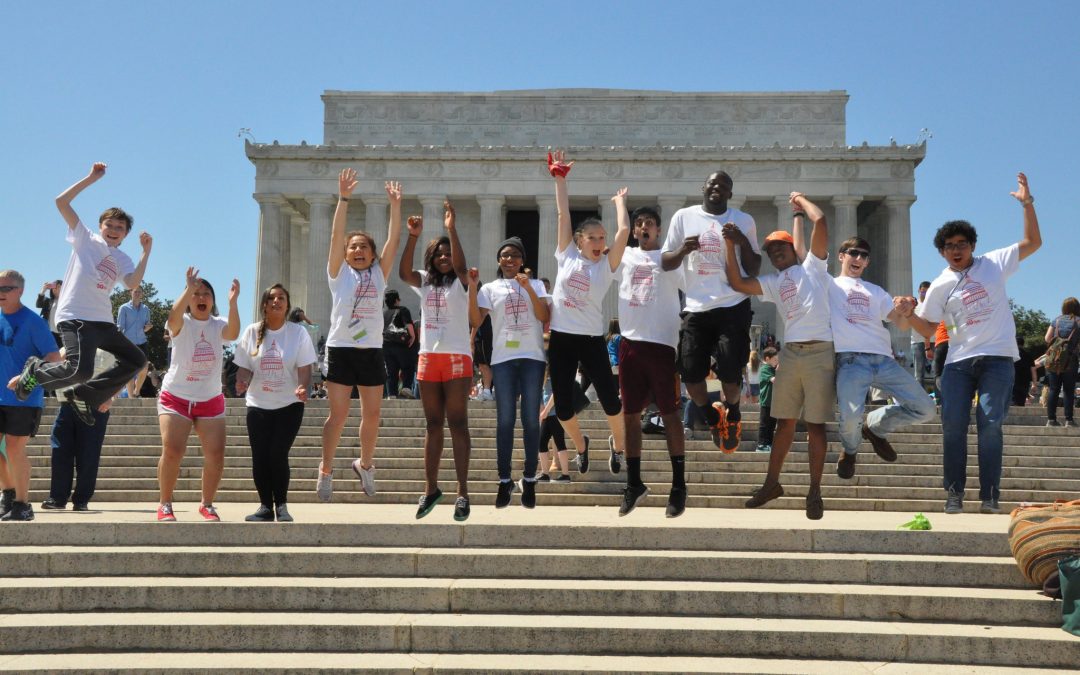By. Amy Meuers, National Youth Leadership Council
Despite recent civic action by young people, a June 2018 report by the Democracy Project doesn’t shed a positive light on the state of our Union.
Democracy is facing its most significant challenge of recent years. Worldwide, the uneven distribution of economic progress and unrelenting pace of change have tested the capacity of democratic institutions and their leaders to deliver. At the same time, authoritarian regimes and populist national movements have seized the opportunity to undermine democracy and the example of freedom it represents.
The phenomenon has not spared the United States, where confidence in our governing institutions has been weakening over many years and key pillars of our democracy, including the rule of law and freedom of the press, are under strain. These trends have raised questions about whether the public has begun to lose faith in basic democratic concepts and what can be done to strengthen popular support. (The Democracy Project, 2018, p. 1)
Among the report’s findings are results from a national survey of American attitudes about democratic principles and institutions. Fifty-five percent of survey respondents believe our democracy is weak and 68% believe it’s getting weaker. The impeachment proceedings against the sitting President, the lack of faith in our government, and the continuous attacks on media – historically the watchdogs of government – doesn’t bode well for future generations.
The future of our democracy depends on our collective ability to create informed and engaged citizens. In Guilfoile and Delander’s (2016) Guidebook: Six Proven Practices for Effective Civic Learning, service-learning was identified as a “promising approach” proven to develop competent and responsible citizens. Service-learning was clearly defined in the National and Community Service Act of 1990, signed into law by President George H.W. Bush. The act was reauthorized in 1993 as the National Community Service Trust Act and was signed by President Bill Clinton.
Numerous K-12 schools and higher education institutions have responded to the call to strengthen our democracy by adopting service-learning as a civic learning pedagogy. Service-learning is an approach to teaching and learning in which students use academic and civic knowledge and skills to address genuine community needs. It develops their critical thinking and problem-solving skills while allowing them to tackle some of today’s most difficult challenges, like education equity, peace, and sustainability. Most importantly, quality service-learning prepares students to engage in the political process and work cooperatively for the good of society.
When service-learning is not implemented with quality, it’s been proven to have a negative impact on students and their communities (RMC Research Corporation, 2008). To help teachers develop a quality service-learning practice, the National Youth Leadership Council (NYLC) worked with leaders in the field to develop the K-12 Service-Learning Standards for Quality Practice. These standards include (1) meaningful service, (2) intentional link to curriculum, (3) reflection, (4) diversity among participants, (5) youth voice, (6) mutually beneficial partnerships, (7) ongoing progress monitoring, and (8) appropriate duration and intensity to meet community needs and outcomes. These best practices guide educators to design and assess the service-learning process with their students.

To strengthen the academic and civic power of service-learning, NYLC advocates that teachers follow the process of backward planning in service-learning unit design. Using this approach, teachers:
- Identify the academic and civic knowledge and skills and other learning goals of the unit.
- Determine how they will assess student progress and mastery.
- Formulate the learning experiences that will help students succeed.
- Evaluate outcomes and determine next steps.
Many times in a traditional service-learning unit, the service project is the driver of learning (e.g., park clean-up or food drive). In the backward planning approach, the learning topic (e.g., human impacts on Earth systems) is the driver for learning and the project or service is the outcome (e.g., restoration of local wetlands). Through the backward planning process, teachers and students are able to evaluate the effectiveness of learning and skill development and the project’s impact on the community in which they served.
The student experience for democratic problem-solving used in service-learning is the IPARD Cycle (Investigation, Planning, Action, Reflection, and Demonstration). It’s this approach that has the potential to tap into students’ passions and their desire to understand the issues relevant to their lives. It’s also within this cycle where the standard of youth voice becomes the foundation for creating a trusting, engaging learning environment. Through youth voice, students work in partnership with adults through shared decision-making. Adults serve as a resource for youth as they plan, facilitate, and evaluate their project. Youth voice provides the autonomy for youth to become confident in advocating for their own voice, which has been associated with higher academic and civic engagement (RMC Research Corporation, 2008).
Harry Hurst Middle School, located just outside New Orleans in Destrehan, Louisiana, exemplifies quality service-learning. Barry Guillot, a science teacher at Harry Hurst, created a program called Wetland Watchers that uses education, service, and awareness to engage students in wetland conservation. More than 1,100 fifth- through eighth-grade students plan and participate in service activities each school year to improve their local habitat and the community. Some of these activities include working with experts from partner institutions, like the University of New Orleans and the Lake Pontchartrain Basin Foundation, to protect the Louisiana Coastal Wetlands.
Students are introduced to the different units in their science and math classes where they engage in the IPARD process:
- Investigate: Students research and investigate the history of the coastal wetlands and identify native plants and animals.
- Plan: Students use the expertise they have gained to plan experiences for other students and the larger community.
- Action: Students choose an area in or near Wetland Watchers Park that needs litter picked up. They set a date and publicize for volunteers to come and participate in the clean-up. All volunteers fill out data sheets to record every item that’s collected. Students create bar graphs using the collected data. With their results, students target groups of people who are leaving the most trash behind (e.g., boaters, shoreline fishermen, picnic groups, campers) and discuss ways to get information to these groups to make sure they know how their actions impact the areas that they depend on for recreation activities. Students create signs, brochures, avatar PSAs, and other forms of media with information concerning the impact of litter.
- Reflection: Throughout the process, students reflect on their experiences and learning through group and independent reflection.
- Demonstration: Students create presentation activities; train to present wetland animals such as alligators, snakes, and turtles; and create presentation scripts based on facts they have researched. Students have volunteered more than 250,000 hours through outreach opportunities including science nights, Earth Day celebrations, festivals, and environmental conferences.
“Not only are they learning, Guillot says, “but they are helping out. They are making a difference. And in middle school, when they are really trying to figure out who they are and where they’re going, being able to be a positive contributing member of the community is so important. Having that feeling of what it is like to be a positive member of society is what is going help them to become a lifelong contributor. It helps them want to continue to have that feeling. It builds their self-esteem.”

Numerous positive outcomes are possible when service-learning is used as a pedagogy. There’s personal development outcomes – students see themselves as change-makers, leaders, and contributors to a better world. There’s social and interpersonal development outcomes, from social comfort and group work to social sensitivity and intergenerational connectedness. Outcomes also can be seen in values development and academic and cognitive development – students become better critical thinkers and increase their subject area knowledge. These outcomes are increasingly backed by research. Many studies have shown that participants in service-learning make greater gains than others in academic achievement and motivation, self-esteem, moral development, attitudes toward the community and others, and civic engagement. Furthermore, when service-learning meets ‘quality standards’ students make even greater gains (Root, 2017).
Outcomes from a 2015 evaluation of NYLC service-learning programs by Johns Hopkins showed that 95.4% of teachers agreed or strongly agreed that service-learning builds leadership skills in students, 86.4% agreed or strongly agreed that service-learning fosters critical thinking, and 90.9% agreed or strongly agreed that service-learning promotes social/emotional learning in students. In the same evaluation, a majority of students reported feeling competent in planning projects (62%) and in their ability to recognize the needs of others (71.5%). Students also reported increased prowess in 21st century skills (60%).
In the case of the Wetland Watchers service-learning program in Louisiana, students have shown an increased awareness of wetland values and challenges and enjoyed more opportunities to study environmental issues in their classrooms. One student stated, “It [service-learning] helped me realize how much I could really do for my community and how there are different types of jobs and careers that you can do to not only educate yourself but to help others.” Another shared, “If the animals and plants could talk, they would say we are their heroes ‘cause that is how I feel when I am working in the wetlands.”
Ensuring an excellent education for all our children is one of the fundamental principles of our society. In a democratic society, the educational opportunities we provide students must not only help them learn core subject matter but prepare them to be civically informed and engaged citizens. Service-learning is a powerful way to provide young people with the knowledge, skills, and character to embrace the democratic practices needed to support the health and security of our democracy.
Works Cited
The Democracy Project. (2018). The democracy project: Reversing a crisis of confidence. Retrieved from: www.democracyprojectreport.org/report
Guilfoile, L. and Delander, B. (2016). Guidebook: Six proven practices for effective civic learning. National Center for Learning and Civic Engagement. Retrieved from: https://www.ecs.org/six-proven-practices-for-effective-civic-learning/
RMC Research Corporation. (2008). Standards and indicators for effective service-learning practice. Scotts Valley, CA: National Service-Learning Clearinghouse.
Root, S. (2017). Service-learning by design. St. Paul, MN: National Youth Leadership Council.
Author Bio
Amy Meuers is the Chief Executive Officer of the National Youth Leadership Council (NYLC), an international nonprofit organization that is committed to ensuring all young people become civically informed and engaged global citizens. Amy joined NYLC in 2004 and became CEO in 2015 after serving in various positions within the organization. Amy has spoken at national and international conferences; trained on topics including service-learning, leadership, and youth engagement; and written numerous articles and blogs on the importance of youth voice and civic action. She holds a master’s degree in Organizational Leadership from Regis University.

